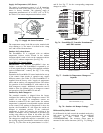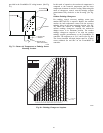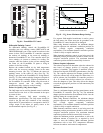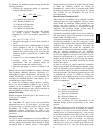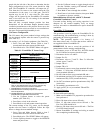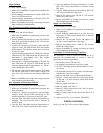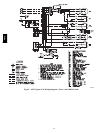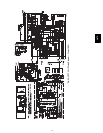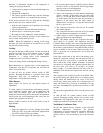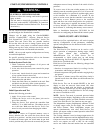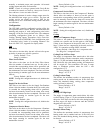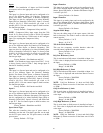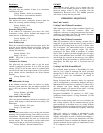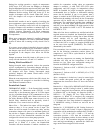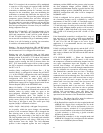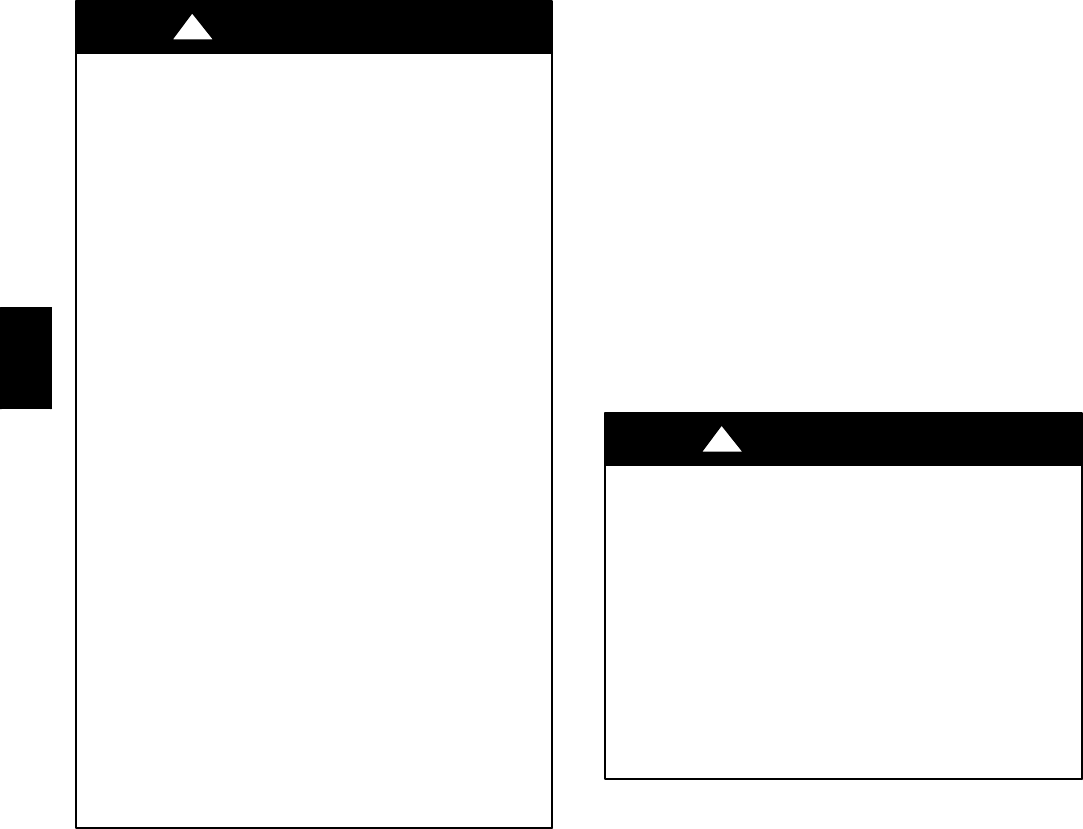
66
PRE--START--UP
PERSONAL INJURY HAZARD
Failure to follow this warning could result in personal
injury or death.
1. Follow recognized safety practices and wear pro-
tective goggles when checking or servicing refri-
gerant system.
2. Do not operate compressor or provide any electric
power to unit unless compressor terminal cover is
in place and secured.
3. Do not remove compressor terminal cover until
all electrical sources are disconnected.
4. Relieve all pressure from system before touching
or disturbing anything inside terminal box if refri-
gerant leak is suspected around compressor ter-
minals.
5. Never attempt to repair soldered connection while
refrigerant system is under pressure.
6. Do not use torch to remove any component. Sys-
tem contains oil and refrigerant under pressure.
To remove a component, wear protective goggles
and proceed as follows:
a. Shut off electrical power and then gas to unit.
b. Recover refrigerant to relieve all pressure from
system using both high--pressure and low
pressure ports.
c. Cut component connection tubing with tubing
cutter and remove component from unit.
d. Carefully unsweat remaining tubing stubs
when necessary. Oil can ignite when exposed
to torch flame.
!
WARNING
Proceed as follows to inspect and prepare the unit for
initial start--up:
1. Remove all access panels.
2. Read and follow instructions on all WARNING,
CAUTION, and INFORMATION labels attached to,
or shipped with, unit.
3. Make the following inspections:
a. Inspect for shipping and handling damages such
as broken lines, loose parts, or disconnected
wires, etc.
b. Inspect for oil at all refrigerant tubing connec-
tions and on unit base. Detecting oil generally
indicates a refrigerant leak. Leak--test all refri-
gerant tubing connections using electronic leak
detector, halide torch, or liquid--soap solution.
c. Inspect all field--wiring and factory--wiring con-
nections. Be sure that connections are completed
and tight. Be sure that wires are not in contact
with refrigerant tubing or sharp edges.
d. Inspect coil fins. If damaged during shipping and
handling, carefully straighten fins with a fin
comb.
4. Verify the following conditions:
a. Make sure that condenser--fan blade are correctly
positioned in fan orifice. See Condenser--Fan
Adjustment section for more details.
b. Make sure that air filter(s) is in place.
c. Make sure that condensate drain trap is filled
with water to ensure proper drainage.
d. Make sure that all tools and miscellaneous loose
parts have been removed.
START--UP, GENERAL
Unit Preparation
Make sure that unit has been installed in accordance with
installation instructions and applicable codes.
Gas Piping
Check gas piping for leaks.
UNIT OPERATION AND SAFETY HAZARD
Failure to follow this warning could result in personal
injury or death.
Disconnect gas piping from unit when leak testing at
pressure greater than 1/2 psig. Pressures greater than
1/2 psig will cause gas valve damage resulting in
hazardous condition. If gas valve is subjected to
pressure greater than 1/2 psig, it must be replaced
before use. When pressure testing field--supplied gas
piping at pressures of 1/2 psig or less, a unit connected
to such piping must be isolated by manually closing
the gas valve.
!
WARNING
Return--Air Filters
Make sure correct filters are installed in unit (see
Appendix II -- Physical Data). Do not operate unit without
return--air filters.
Outdoor--Air Inlet Screens
Outdoor--air inlet screen must be in place before operating
unit.
Compressor Mounting
Compressors are internally spring mounted. Do not loosen
or remove compressor hold down bolts.
Internal Wiring
Check all electrical connections in unit control boxes.
Tighten as required.
Refrigerant Service Ports
Each unit system has two 1/4” SAE flare (with check
valves) service ports: one on the suction line, and one on
the compressor discharge line. Be sure that caps on the
ports are tight.
Compressor Rotation
On 3--phase units with scroll compressors, it is important
to be certain compressor is rotating in the proper
48TC



